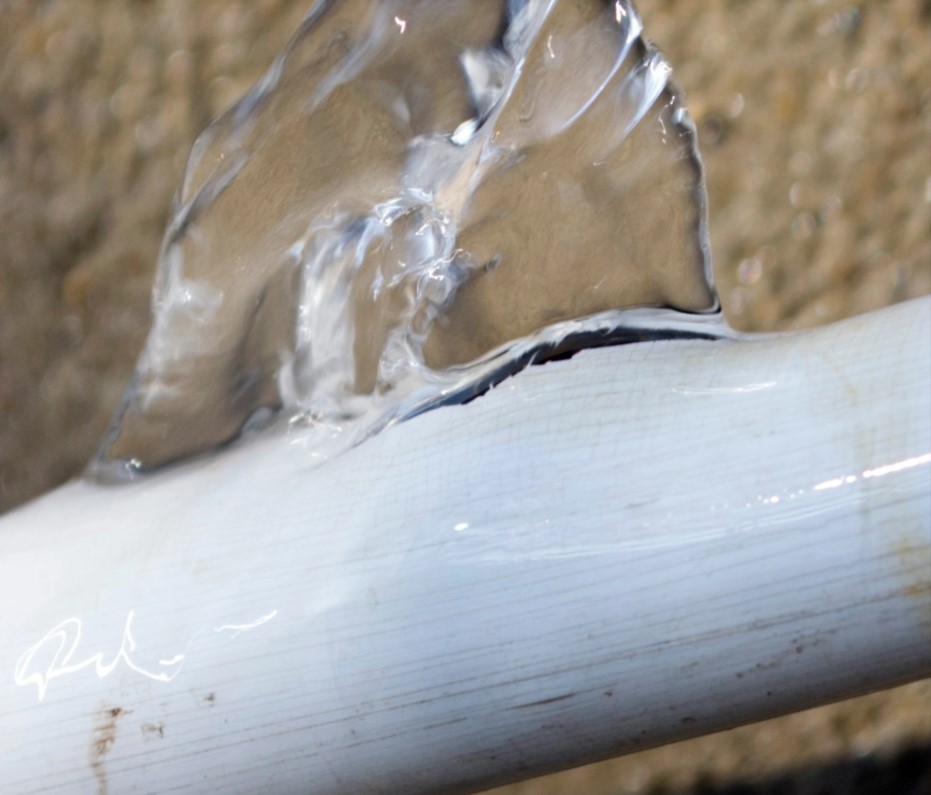Slab Leaks
Got a slab leak in San Antonio, Austin, Lakeway or surrounding areas?
No Problema! Our expert plumbers can repair any slab leak, even if we have to tunnel under your foundation to repair it! Call us today!
There are so many things that can cause a slab leak in your home in San Antonio, Austin or Lakeway Texas.
Slab leaks are leaks that happen underneath the foundation of your home. There’s many things that can cause this to happen such as your home’s foundation shifting or moving. Any movement in your home’s concrete foundation can cause the plumbing underneath it to snap like a twig. A slab leak is a leak from the water supply main line under your home, not a break in your DRAIN line – that is a different type of plumbing problem.
Here are the signs of a possible slab leak:
There are several signs that indicate a possible slab leak, including:
- Water spots on the floor, whether hardwood floors, laminate flooring or seeing water spots on the lowest parts of your wall’s drywall, including mildew or moldy spots
- Moist spots on the floor or puddles on the floor (the most obvious sign)
- An abnormally high water bill as compared to your normal bill
- The sound of rushing water underneath the floor – try lying down and putting your ear against the floor and listen for it
- Lower water pressure than normal from your plumbing system such as faucets, hot water and cold water lines, when running water
- You’re able to see water flowing outside of your home close to the foundation
Here are the steps our plumbing professionals will take to verify if you have a foundation leak:
- Step 1) Initial Assessment and Symptom Evaluation
- Plumbers start by interviewing the homeowner about signs like high water bills, wet spots on floors, reduced water pressure, or sounds of running water.
- They inspect visible plumbing and check for warm spots on the floor (indicating a hot water line leak) or mold/mildew growth.
- Step 2) Leak Detection
- Pressure Testing: Plumbers shut off the water supply and use a pressure gauge to check if the system holds pressure. A drop in pressure suggests a leak.
- Electronic Leak Detection: Specialized tools like acoustic sensors or ground microphones detect water flow sounds under the slab.
- Thermal Imaging: Infrared cameras identify temperature differences caused by leaking hot water lines.
- Tracer Gas or Dye Testing: In complex cases, plumbers may inject non-toxic gas or dye into the pipes to pinpoint the leak’s location.
- Step 3) Confirming the Leak Location
- Once a potential leak is identified, plumbers may use video pipe inspection (inserting a camera into the pipe via an access point) to confirm the exact location and assess pipe damage.
- They mark the spot on the slab for repair, ensuring precision to minimize disruption.
- Step 4) Repair Options Will Be Given To The Homeowner
Depending on the leak’s severity, pipe material, and accessibility, plumbers choose from several repair methods:- Spot Repair:
- Excavate the slab at the leak site (using a jackhammer or saw).
- Repair or replace the damaged pipe section with new material (e.g., copper or PEX).
- Patch the slab with concrete.
- Pipe Rerouting: For extensive damage or recurring leaks, plumbers may bypass the slab by rerouting pipes through walls or ceilings, avoiding further slab penetration.
- Epoxy Pipe Coating: Apply an internal epoxy lining to seal leaks without excavation, suitable for minor leaks in accessible pipes.
- Repiping: In cases of widespread corrosion (e.g., old galvanized pipes), replace all under-slab pipes with modern materials like PEX or copper, often requiring significant slab access.
- Tunneling: For less invasive repairs, plumbers may dig a tunnel beneath the slab to access and repair the pipe, preserving the floor.
- Spot Repair:
- Step 5) Testing and Verification
- After repairs, plumbers pressurize the system and test for leaks to ensure the fix is sound.
- They may re-run electronic detection tools or monitor water meter readings to confirm no further leaks exist.
- Step 6) Restoration and Cleanup
- Repair the slab, flooring, or any structural damage caused during excavation.
- Ensure the area is clean and safe, addressing any water damage or mold issues caused by the leak.
- Step 7) Preventive Recommendations
- Plumbers may suggest water softeners (for hard water causing corrosion), regular pipe inspections, or upgrading old pipes to prevent future slab leaks.
- They advise monitoring water bills and pressure for early leak detection.
If you think you might have a slab leak, call us today!
Call for a free estimate today at 210-519-5959 in San Antonio area or (512) 859-5959 in Austin Area.
Air & Plumbing Today can tackle any slab leak FAST! We have expert plumbers ready to respond. Call or text us now for a free estimate!

Our Offices
3615 Tavern Oaks San Antonio TX 78247
2009 FM 620 N Lakeway, TX 78734
Call or Text Us
Email Us
Hours
24/7 EMERGENCY SERVICE
(A live person always answers)
Our Offices
3615 Tavern Oaks San Antonio TX 78247
2009 FM 620 N Lakeway, TX 78734
Call or Text Us
Email Us
Hours
24/7 EMERGENCY SERVICE
(A live person always answers)
By submitting this form and signing up for texts, you consent to receive messages from Air & Plumbing Today LLC at the number provided regarding your request, updates about appointments and services or promotions and offers, including messages sent by autodialer. Consent is not a condition of purchase. Msg & data rates may apply. Msg frequency varies. Unsubscribe at any time by replying STOP. Reply HELP for help. Privacy Policy & Terms
